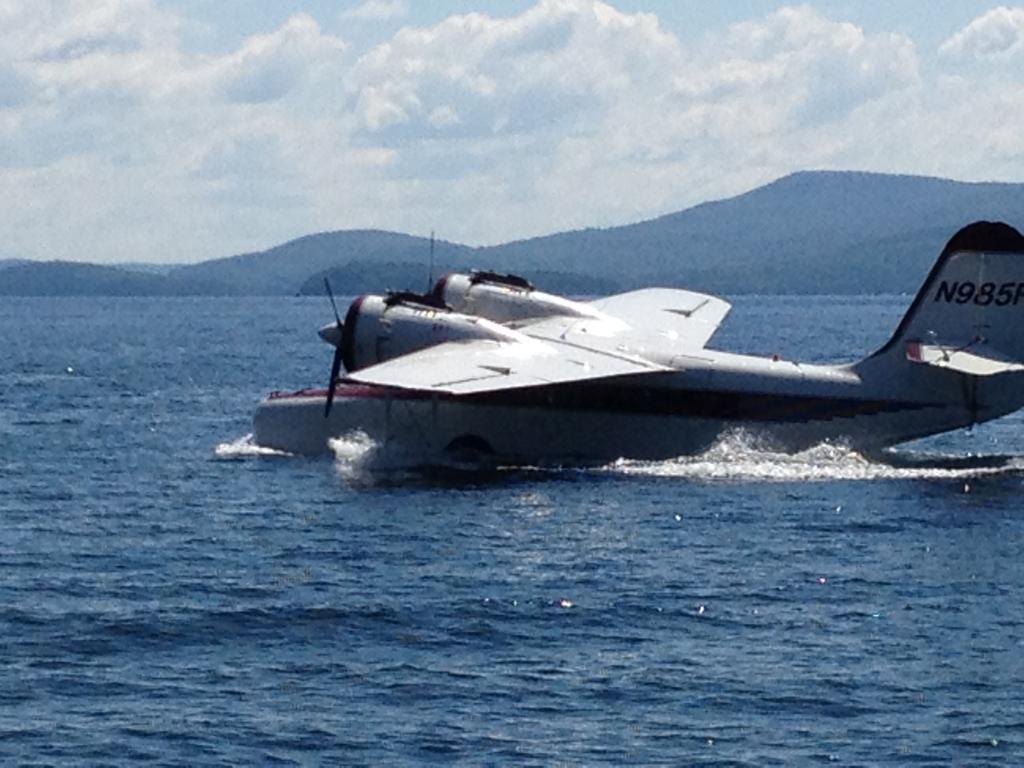Quote:
Originally Posted by Convertible Girl

Attachment 9780 That plane is awesome, it landed right in front of us over at Steamboat island. The people on board then got off and had a picnic out on the plane, they had lots of onlookers while they were out there.
|
 This
This aircraft above has radial (round) engines. The aircraft I saw didn't have radial engines (by the sound) but had skinnier, and more powerful engines. It flew over me three times. I'm not questioning the occurrence(s) on Lake Winnipesaukee, but only
one of these planes can be the subject aircraft!

I spent a lot of time yesterday trying to figure out the differences between Grumman's models
Duck, Goose, Mallard, and
Albatross, but only confused myself through the many
YouTube distractions on the Internet.

I tried counting windows, but that's a variable on these aircraft.
The Albatross is the largest. The Mallard is smaller than the Goose, according to this site:
https://www.youtube.com/watch?v=py8IOqM-Z8A.
Since that wasn't helpful, I tried for "empty weight". The Widgeon looks small and weighs a small 3,189 pounds. The Mallard weighs 3,969 pounds, The Goose weighs 6,700 pounds, and the huge Albatross weighs 22,883.
The "Duck" was an early military amphibian, suitable for launching off Navy cruisers. My Dad said he flew a Duck with "beaching gear"—for land-based operations—and said "That plane almost killed me!". (And returned to me the two books on the Duck I had just bought the day before).

My Dad also "dodged a bullet" when he piloted for Chalk's Ocean Airways to the Bahamas/Miami. Management upgraded their Mallard to turboprops about the time he thought he'd retire for good. Not long afterwards, one of Chalk's Mallards crashed shortly after takeoff, with a loss of all 20 people.

The
reason given was that the extra power stressed the wing root, a crack developed, was unintentionally hidden with sealer—the stress fatigued the metal—and the wing broke off.

Now I see a link to the tail number N380GB, and so
it is a Mallard, after all. Tail number N985R belongs to the Grumman Goose with the radial engines (pictured first).
